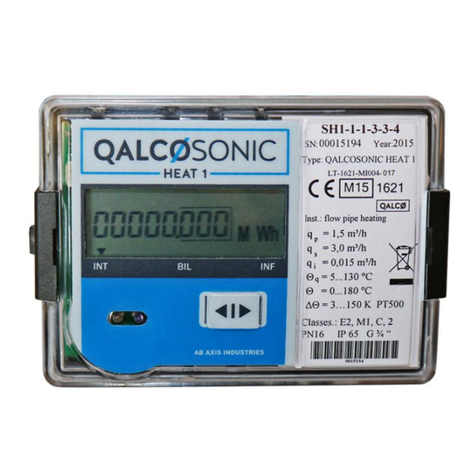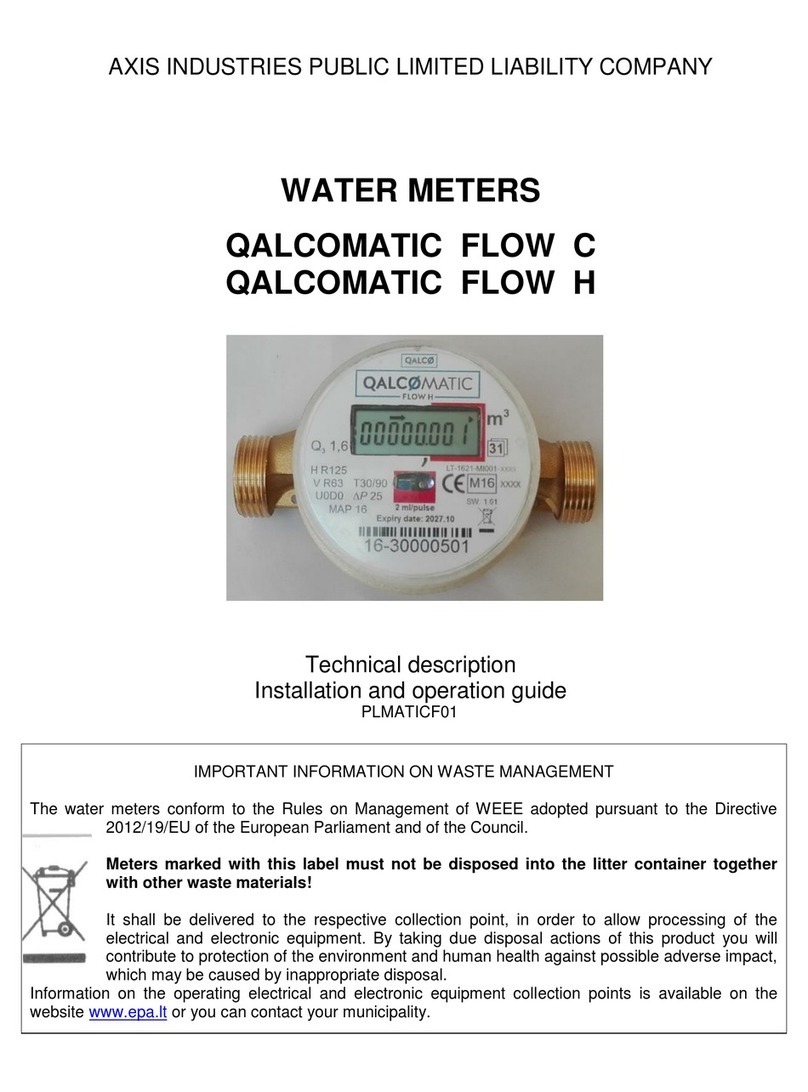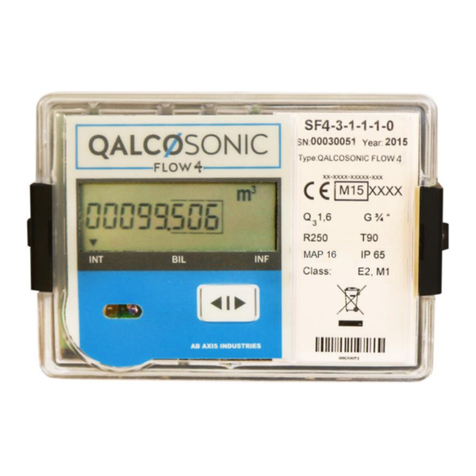SAFETY REQUIREMENTS
Before operating the meter, please read this technical description and user's manual thoroughly
and follow their instructions.
When the meter is powered from the battery (3.6 V), risk factors during the meter installation
and service is a heat conveying fluid with inner pressure up to 2,5MPa and temperature up to
1800C.
If meter is powered from mains power supply, it contains dangerous ~230 V electrical current. It
is necessary to follow general safety requirements during installation and maintenance process.
To eliminate this risk, only qualified technical personnel may install and maintain heat meters
(certificates for electrical installation work with equipment up to 1000 V are required). Personnel
must be familiar with appropriate technical documentation and general safety instructions.
Device comply with safety class II. and does not require protective grounding. To protect power
circuits from current overrun, 0,1A fuse, marked “F1”, is mounted on the bottom side of power
supply module. Remove power supply module to replace the fuse.
If relay output current exceeds 2 A, it may damage output circuits. It is recommended to use
additional protection circuits to protect relay outputs from damage.
Safety guarantees at installation and service of meter is:
- Reliable insulation of electrical circuits,
- Hermetic fitting of primary flow and temperature sensors into the pipeline,
- Reliable fastening of a sub-assemblies of heat meter at installation.
Safety requirements for temperature and pressure sensors are provided in appropriate technical
documentation.
Warning! Switch off mains power supply before changing, repairing, connecting or
disconnecting system parts, if meter is powered from mains power supply! Power switch has to be
installed close to the calculator.
Mounting of the sub-assemblies of heat meter is permissible only after ensuring of absence
of heat conveying fluid in the pipeline.
When the meter is powered from the mains supply 230 V:
- The calculator of meter should be mounted in the cabinet (panel)
- The calculator of meter must be connected to line voltage 230 V using 3-wire copper cable
with cross-section of each wire not less than 0,5 mm2 (3x0, 5 mm2) with the color marking. External
diameter of a cable must be 6 ... 8 mm.
- The meter must be connected to mains power supply only through automatic unipolar AC switch
(nominal current 2 A) (Figure B3)..
- The automatic switch should be a part of the building wiring and it should be marked as
disconnecting device of meter. The automatic switch should be installed close to meter and so that it was
easily available to service personnel.
It is recommended to establish the calculator in the same cabinet as the switches for cutting off
power supply. The switches should be adjusted for the power used by the equipment.
Caution: If this equipment is used in a manner not specified by the manufacturer, the
protection provided by the equipment may be impaired.






























